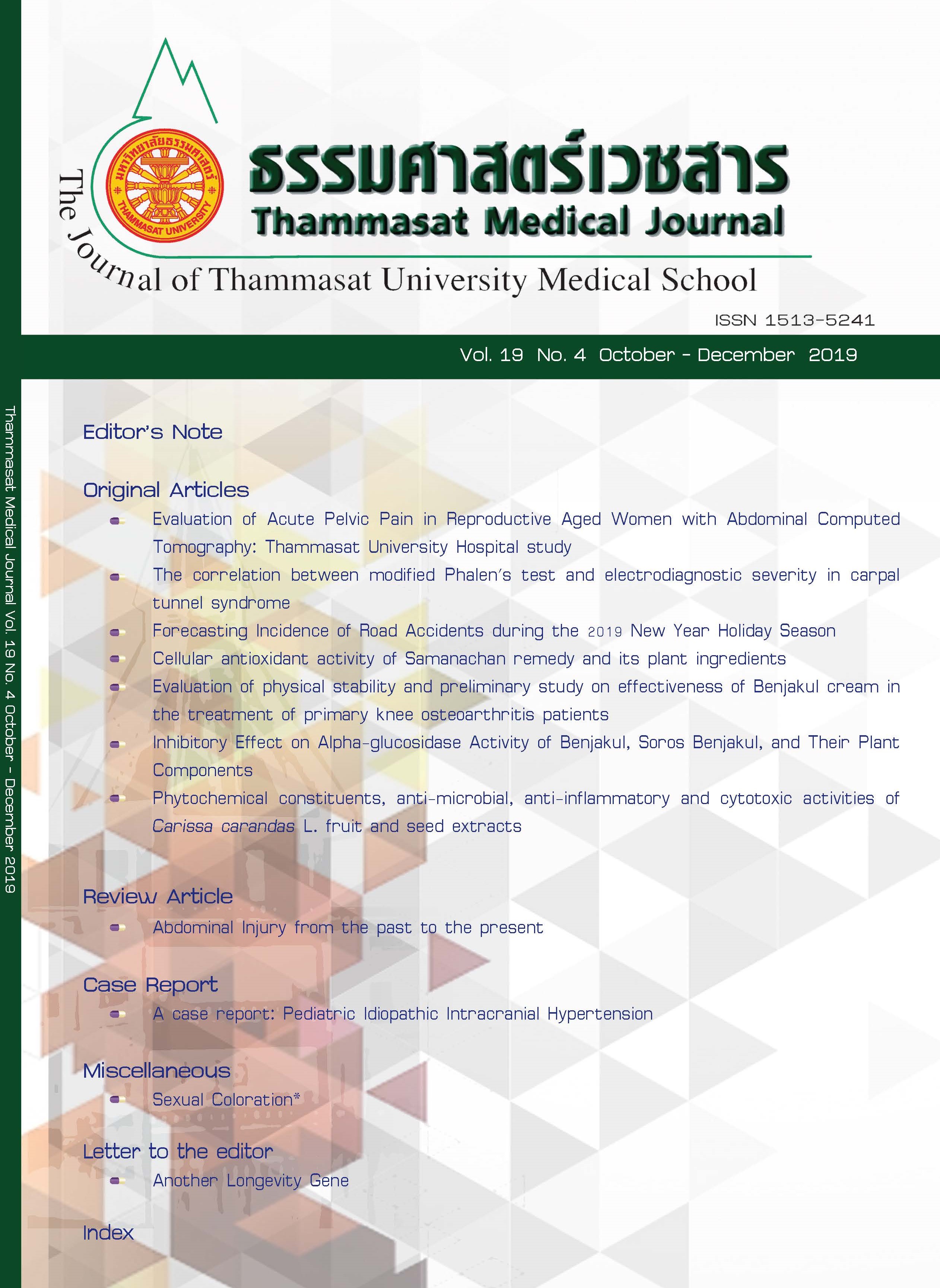Evaluation of Acute Pelvic Pain in Reproductive Aged Women with Abdominal Computed Tomography: Thammasat University Hospital study
Keywords:
acute pelvic pain, reproductive-aged women, abdominal computed tomography, acute appendicitis, pelvic inflammatory diseaseAbstract
Background: Acute pelvic pain is a common condition among reproductive-aged women. Some of them require surgery. Nowadays, abdominal computed tomography play important roles in diagnosis these patients.
Objective: To evaluate the accuracy, sensitivity and specificity of abdominal computed tomography fordiagnosis of various causes of acute pelvic pain in women of reproductive age and to study
the incidence and knowledge of radiographic abnormality acquired from abdominal computed tomography of acute pelvic pain in reproductive-aged woman.
Material and method: We compared 88 abdominal computed tomography results of reproductive female patient with acute pelvic pain with final diagnostic results. The sensitivity, specificity and accuracy of computed tomography for appendicitis, acute gynecologic condition and pelvic inflammatory disease (PID) were calculated.
Result: Seventy-two CT scans show radiographic abnormalities (positive). Overall accuracy of CT in diagnosis the cause of acute pelvic pain was 87.5%. The accuracy, sensitivity and specificity
in diagnosis of acute appendicitis were 98.9%, 100% and 97.7%, respectively. The accuracy, sensitivity and specificity in diagnosis of pelvic inflammatory disease were 96.6%, 83.3% and 98.7%, respectively.
Conclusion: Abdominal CT has high accuracy in diagnosis of the cause of acute pelvic pain in reproductiveaged women. However, it should be rationally performed, considering radiation exposure to vulnerable female pelvic organs. Despite the main limitation, CT scan is useful in case clinical and initial ultrasound is inconclusive.



